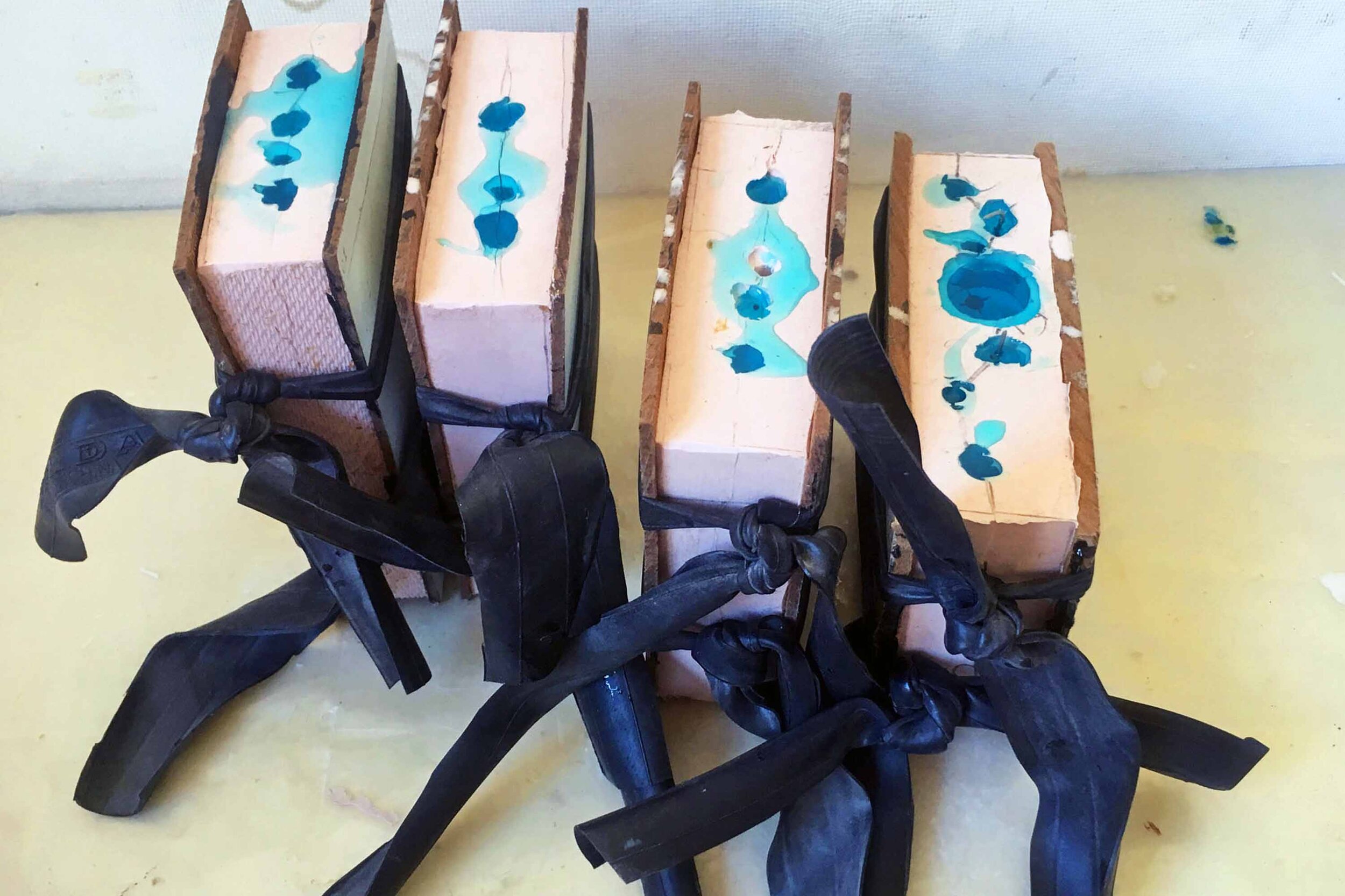The Imaginative Process
I feel driven to make sculpture out of a need to express experiences, feelings and emotions that I encounter as part of life. Paradoxically I find that I can communicate more accurately through a slightly more obscure subject matter, and I am not making an illustration as much as a prompt to deeper shared understandings. I am inspired by every-day subtleties that I find around me, and my creative process comes out of discovering physical forms that express human experience.
All of my sculptures start with an internal investigation that I need to make manifest; arising from the psyche, and not necessarily defined by a rationalized concept. My job is to search about, without words, to find the most resonant and succinct three-dimensional image to express it. I see a vision in my mind’s eye and I work on refining it to communicate with increasing accuracy.
The Physical Process
I made these sculptures by modelling with wax onto a wire armature, or framework. The first process is to make the skeletal frame of the armature, and then bend it into position so that it will support the shape whilst not protruding or getting in the way. I visualise the sculpture in three-dimensions in advance and rotate it in my mind to plan where the armature will fit within it. Then I build up volume using the modelling material, all the while checking that the feel of what I am creating matches with the essence of the intended communication. I finish modelling when there is an absence of areas that need to be addressed. I work in series and make sculptures in quick succession to help the fluidity of the process and ensure that I don’t get caught-up on any one of them. I also work quickly because I have a lot of ideas that I need to get out.
Casting
After I have made the original sculpture I need to mould it and cast it before it can be shown and go to a new home. The drawback of this, compared to a process such as painting, is that it adds a further time-consuming, expensive, and highly technical process. The great benefit is that, having made a mould, I can cast a limited edition in a similar way to two-dimensional print-making. This means that more people can have each sculpture, and also that I can maintain the whole series to show all together.
The Material
I developed and originated an innovative casting technique using a vibrant British-made eco-resin which allows me to reproduce the beautiful translucent cream colour of the original wax into a durable contemporary material, and also to play with further striking colours. The material qualifies to be called an eco-resin because it is made using by-products from other processes and an awareness of its carbon footprint. It is produced in Kent, rather than imported from around the world, and it is non-toxic to work with.
Having developed this process I have been able to create my own unusual aesthetic that matches my dynamic modelling and sets the characters alive.
Bouncing O’s armatures
Bouncing O’s wax originals
Preparing to mould Bouncing O IV
Preparing to mould the Bouncing O’s
All of the Bouncing O’s moulds
Filled O moulds
Opening Bouncing O II rider cast
Opening Bouncing O IV cast
Preparing to assembling Bouncing O’s
Assembling Bouncing O II
Holly in the studio
Holly casting











